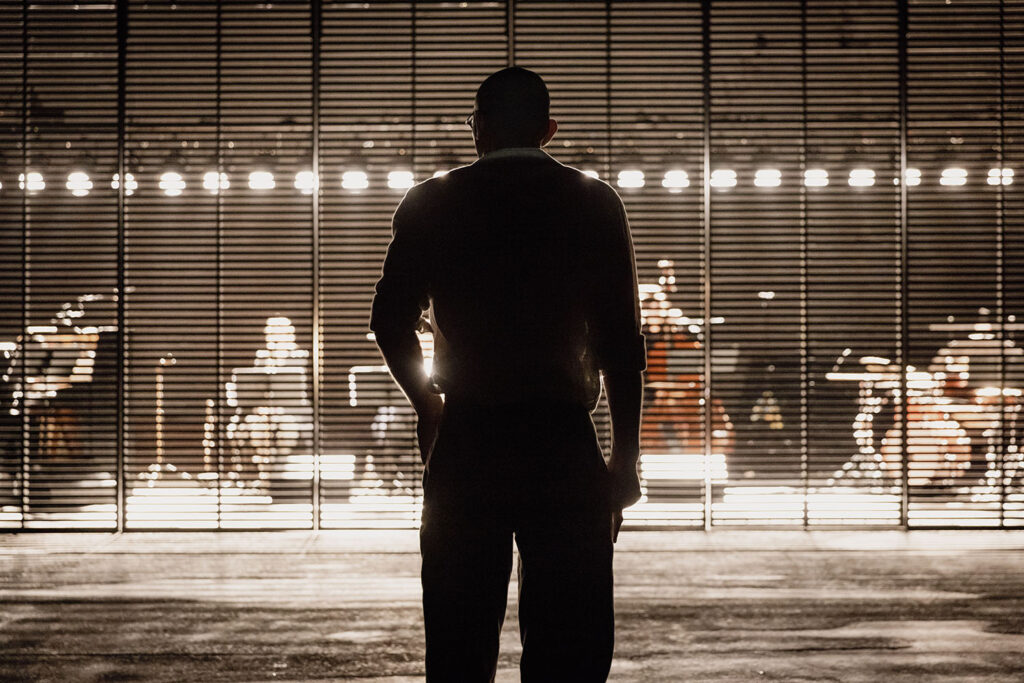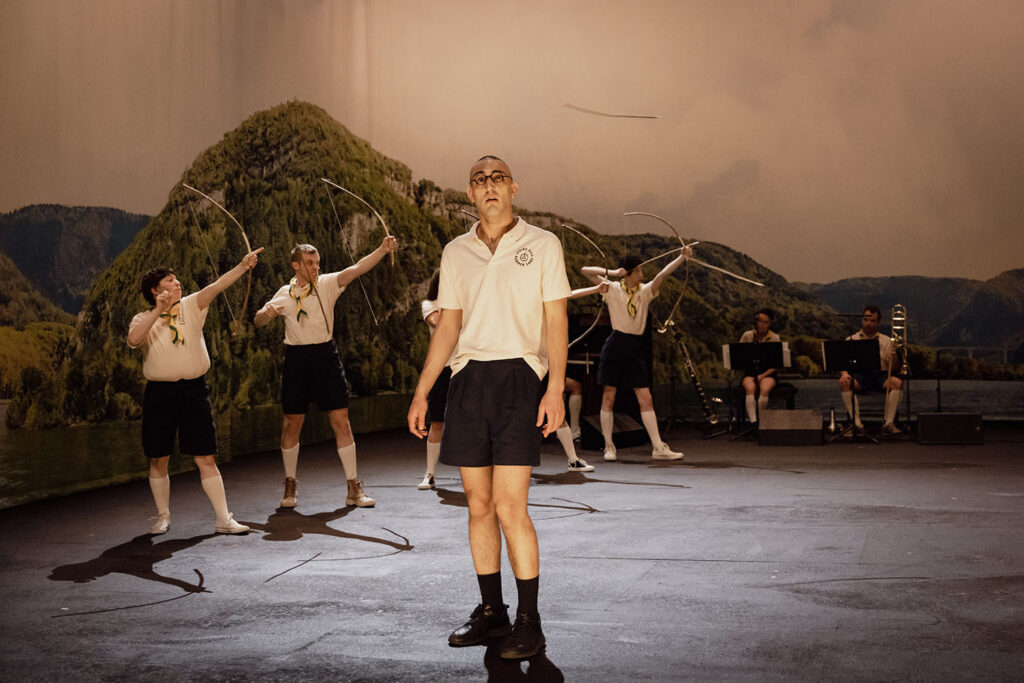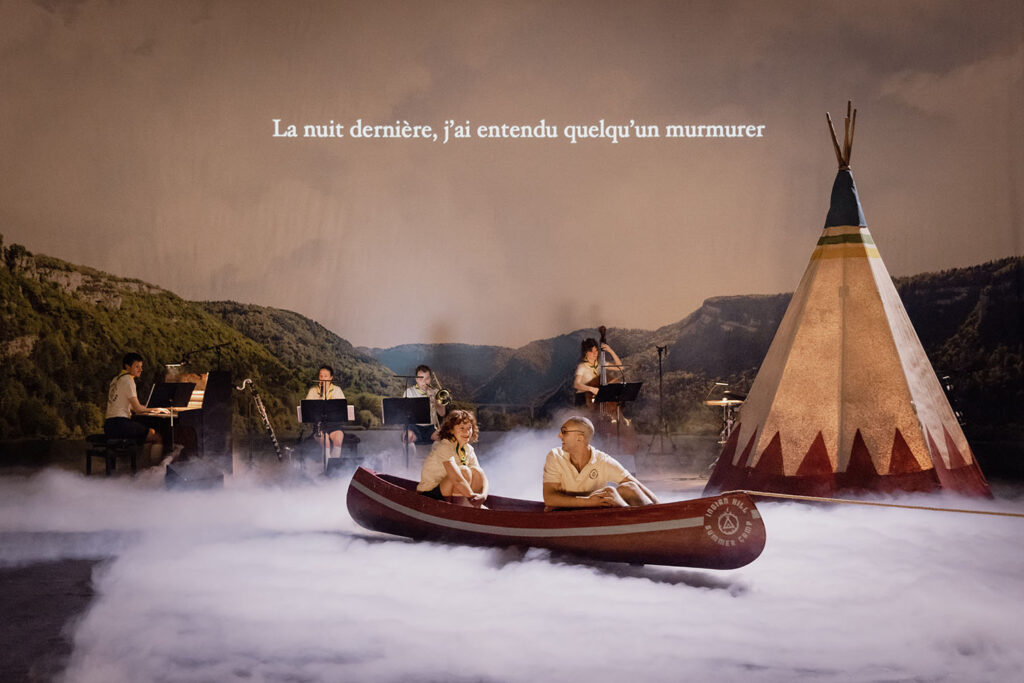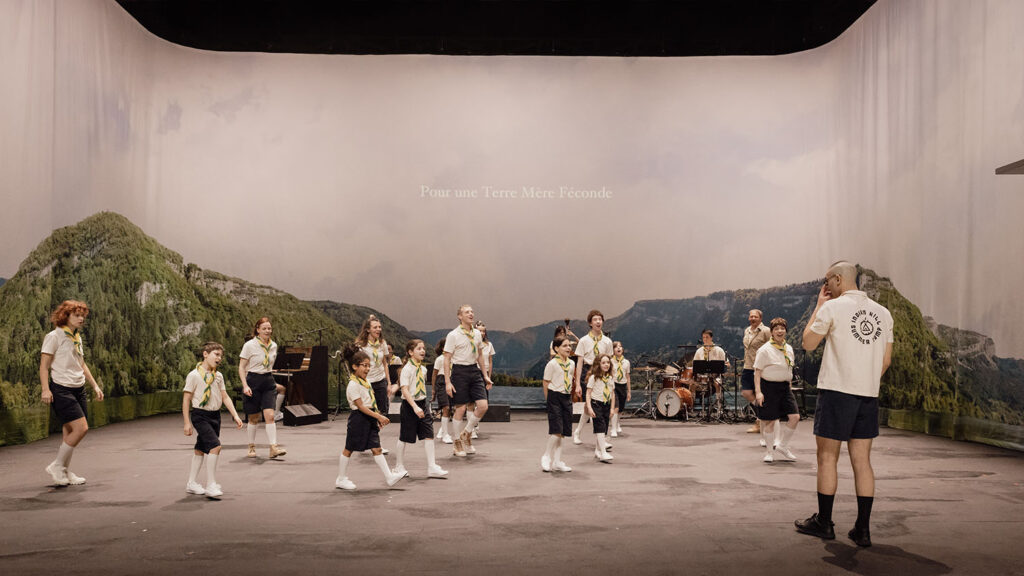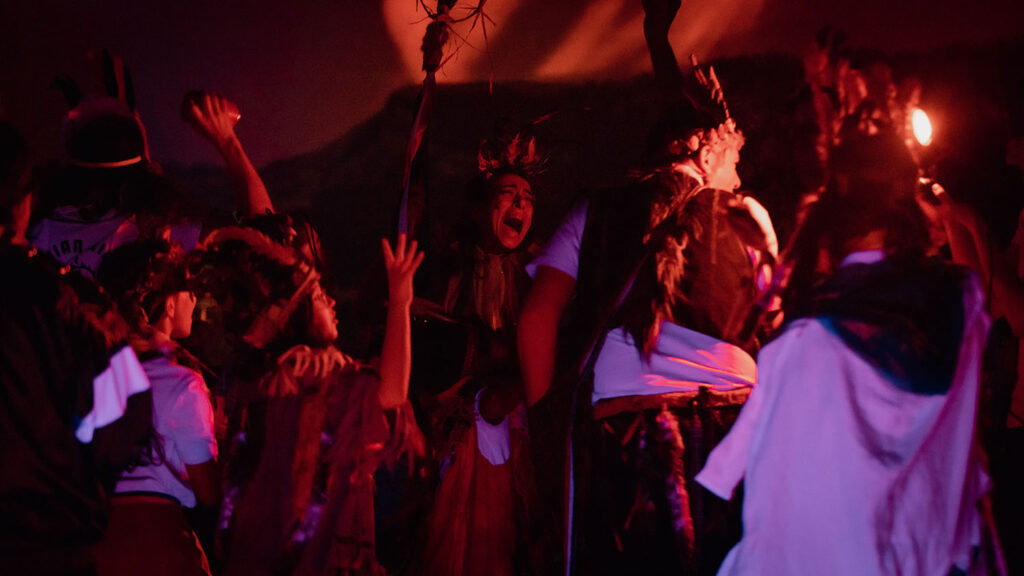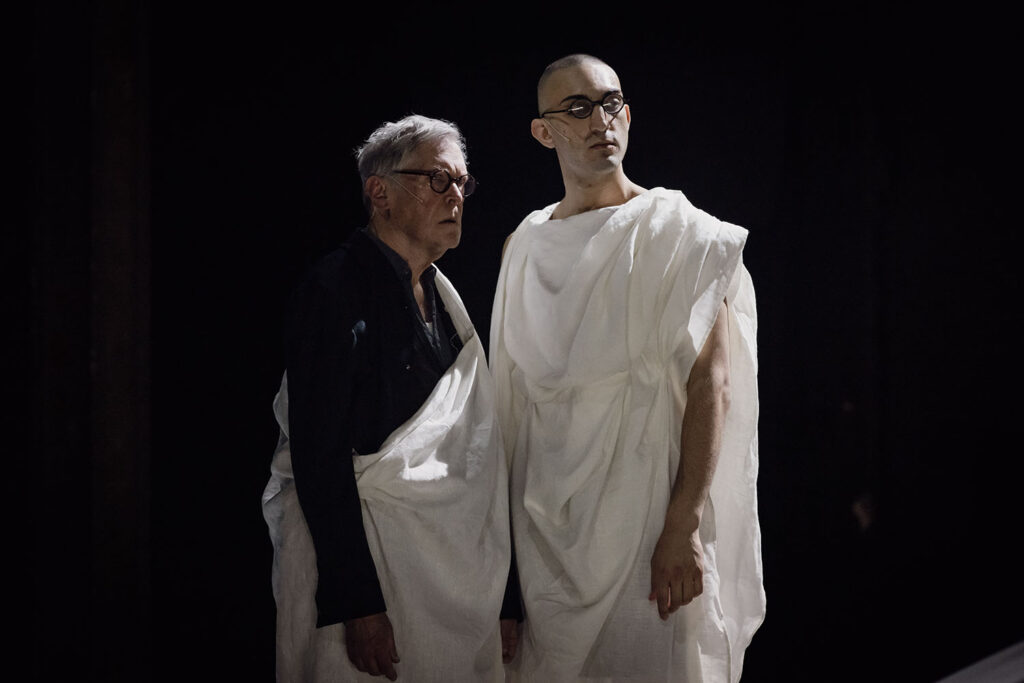Bucky Cantor is Newark’s new playground director.
Bucky is set on being a soldier, but his poor sight keeps him from fighting in Europe.In this summer of 1944, Bucky wants to teach determination, virility, physical strengthand heroism to the young jewish boys under his care.However, temperatures are rising on America’s asphalt. Bucky will have to fight anotherwise unforeseeable evil: poliomyelitis.
Who is responsible for spreading this child killer disease?
Mosquitoes? Italians? God,or Bucky Cantor himself? When I first read Nemesis, I was struck by its subject, moved by its strength, andastonished by its vivid images. However, I did not understand much of it. When I readit for the second time, Philip Roth’s finesse and irony became clear to me.At my third reading, I knew Nemesis had to become a show.
On the one hand, Nemesis’ characters deserve to be embodied — even though bybeing transferred from a novel to a play they must be betrayed and become hybrids,fantasies. That is what awaits them.On the other hand, Bucky Cantor joins a long list of blind, megalomaniac fictionalcharacters. If Philip Roth makes him short-sighted, it is his entire relationship to realitythat is twisted. As insecure as he is proud, Bucky Cantor embodies solipsism. This iswhy his perspective on life, as a subjective and dysfunctioning one, invitesdramatisation.
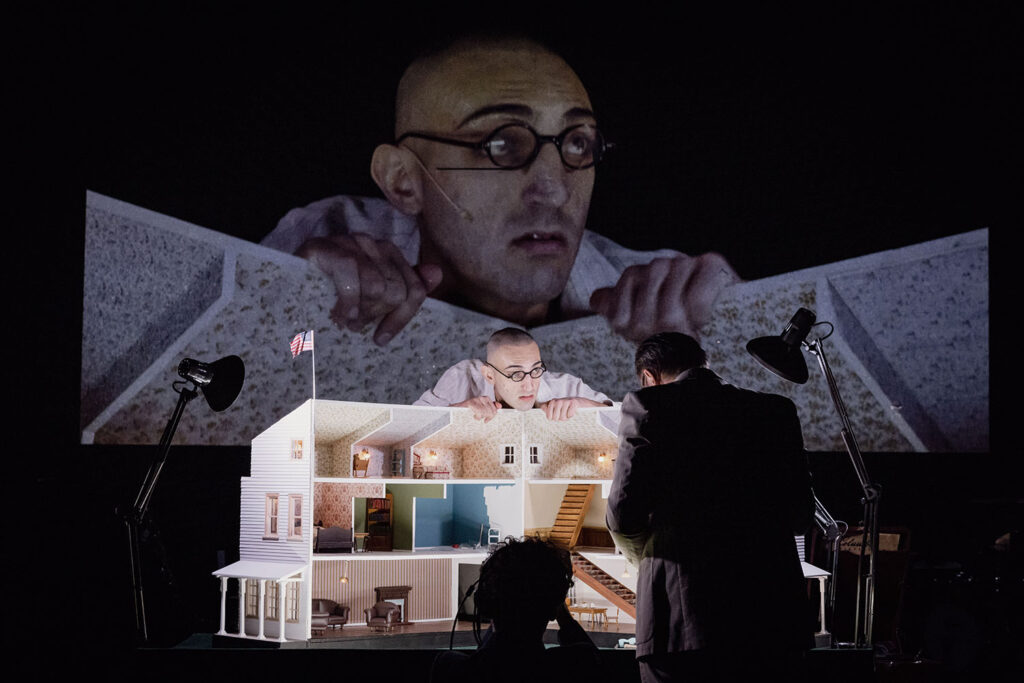
In Greek mythology, Nemesis refers to the goddess as well as the punishment: thegoddess enacts the gods’ retribution, and the punishment sanctions those who havetransgressed human boundaries. This makes Bucky Cantor the hero of a Greektragedy: he is struck by hubris.However, the story also takes after biblical parables, especially regarding Bucky’s relationship with God in the novel’s denouement.
There is tenderness in Philip Roth’s writing, but also nastiness — and a surprising,overwhelmingly smart, joyous irony. Nemesis raises questions on the meaning ofconcepts such as contingency, guilt and resilience. His novel also deals with thevulnerability of Men as well as the overly masculine upbringing of young boys. Somany themes I find inspiring in Philip Roth’s non-conformist work.
Today, for this show, I know that characters will stop speaking and start singing. Tosome extent, Nemesis will be a musical. And musicals have everything to do withcontagion, transgression and megalomania.
Tiphaine Raffier – 2023, January
© Photo : Simon Gosselin
Created on March 23, 2023 at Ateliers Berthier – Odéon, Théâtre de l’Europe
Freely adapted from Philip Roth’s novel
Adapted and directed by Tiphaine Raffier
Adaptation and dramaturgy Lucas Samain
With Clara Bretheau,Eric Challier,
Maxime Dambrin, Judith Derouin, Juliet Doucet, François Godart, Alexandre Gonin, Maika Louakairim, Tom Menanteau, Caroline Mounier, Edith Proust, Stuart Seide, Adrien Serre
and the musicians of l’Ensemble Miroirs Etendus Clément Darlu, Emmanuel Jacquet, Lucas Ounissi alternating with Béranger Azema, Clémence Sarda, Claire Voisin
With the participation of a children choir
Music Guillaume Bachelé, Pierre Marescaux and Clément Darlu
Scenography Hélène Jourdan assisted by Alice Girardet
Lighting design Kelig Le Bars
Video design Pierre Martin Oriol
Sound design Hugo Hamman
Collective choregraphy directed by Pep Garrigues
Costumes Caroline Tavernier
Seamstress Valérie Simonneau
Wigs, make-up Judith Scotto assisted by Emmanuelle Flisseau
English diction coach Sophie Decaudaveine
Panoramic image creation Alexis Allemand
Trainees and apprentices Emma Chapon, Ilona Jacotot, Margaux Moulin and Chloé Sananikone
Follow-up to performances Thomas Cabel, Lucas Samain and Tiphaine Raffier
Technical management and general management Olivier Floury
Stage management Marinette Jullien et Nicolas Bignan
Lighting management Christophe Fougou
Cameraman Raphaël Oriol
Video management Nicolas Morgan
Sound management Hugo Hamman and Anne Laurin or Colin Gagnaire
Trim David Feuchot
Wigs and make-up management Emmanuelle Flisseau or Florence Louné
Production set-up Véronique Atlan Fabre
Production La femme coupée en deux
Coproduction Odéon-Théâtre de l’Europe, Théâtre National Populaire de Villeurbanne, Théâtre de Lorient – CDN de Bretagne, Comédie de Béthune, Théâtre de la Cité – CDN de Toulouse- Occitanie, Maison de la Culture d’Amiens, Théâtre du Nord – CDN Lille Tourcoing Hauts-de-France, Comédie de Clermont-Ferrand, La Rose des vents – Scène nationale de Lille-Métropole Villeneuve d’Ascq, Le Volcan – Scène nationale du Havre, Le phénix – Scène Nationale de Valenciennes, Miroirs Étendus, Scène nationale 61 – Alençon
With the support of Ministère de la Cultur, Fondation d’entreprise Hermès, Centre National de la Musique
With the artistic participation of Jeune théâtre national
With the support of insertion fund of l’École du TNB
Residence Malakoff scène nationale
In english-american and french
Duration 2h45 sans entracte
À partir de 12 ans
Nemesis Copyright© 2010, Philip Roth – All rights reserved
Némésis Traduction Marie-Claire Pasquier © Editions Gallimard
